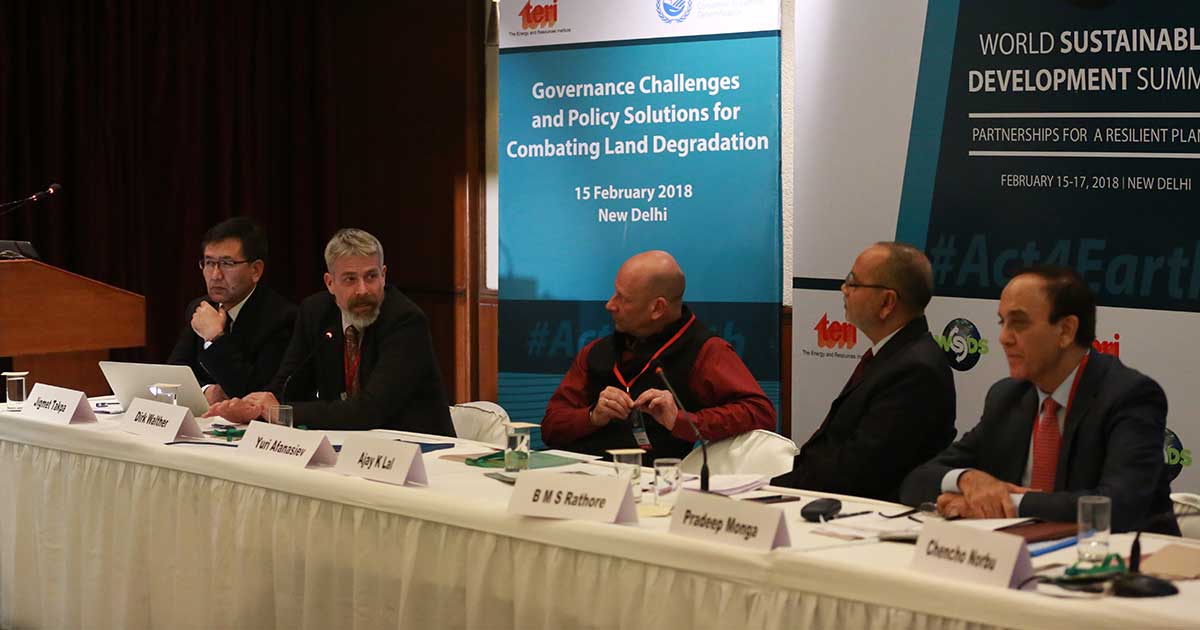
Land at risk: India needs to combat degradation
 Mr Yuri Afanasiev, UN Resident Coordinator and UNDP Resident Representative, said that reliance on a snapshot view today will not be sustainable as no magical methodology can be put in place immediately.
Mr Yuri Afanasiev, UN Resident Coordinator and UNDP Resident Representative, said that reliance on a snapshot view today will not be sustainable as no magical methodology can be put in place immediately.
To understand India's critical need to halt and reverse its land degradation, we must first consider the facts at hand.
Home to 17 percent of world's population and 18% of the world’s cattle, India possesses 2.5 percent of the world’s land. Almost 70% of our land is desert, semi-arid and dry; 2.5% of India's annual GDP is lost to land degradation. If this cost is distributed, 55 percent can be allocated to land use in forestry, and 15 percent in agriculture. It is, therefore, imperative for India to combat the degradation of land, a precious and at-risk asset.
How does India make its degraded land fertile again?
How does India make its degraded land fertile again? asked Mr. Ajay Kumar Lal, Joint Secretary, Ministry of Law and Justice, Government of India, raising one of the most critical aspects of India’s land degradation problem. Linked to this are essentials like agricultural productivity, which needs to be increased by 75 percent to ensure access to food for India’s ever-growing population.
"We are all just trustees"
As land is considered "common property", he said, no one takes responsibility for it. However, this mindset must be replaced, Mr. Lal said, echoing the Gandhian stance of trusteeship of land and natural resources. In response, Mr. B.M.S. Rathore, Chief Policy Advisor, ICIMOD, called for unprecedented collaboration as a response to the challenge of achieving the 2030 agenda. Protecting land must become a “people’s movement”, which necessitates strengthening institutions and communication.
India has had Land Tenancy rights since independence, and people’s participation in forest governance was facilitated in 1988. However, the lack of implementation, inadequate funding, capacity and technology has led to the current conditions, Dr. J.V. Sharma, Director, Forestry and Biodiversity Division, TERI said. Forest governance, instituted through the Forest Right Act 2007, is crucial to land degradation.
Land management: problems and solutions
Unprocessed urban solid waste, desertification, improper agricultural practices, and use of fertilizers are some of the challenges compromising land health. Citing the Indian government’s goal of increasing farmer incomes by 100 percent, Dr. Dirk Walther, Project Director, ProSoil (India), GIZ addressed its implications on soil. Implementing a Green Revolution approach to irrigation to achieve these outcomes can exponentially increase the risk of land degradation, he said.
The way approach: recommendations
Some notable recommendations succinctly captured the way forward that included bringing composting to rural areas; making payment to farmers for ecosystem services; measuring the impact of companies; inclusion of the development of eco-village or bio-living villages like Bhutan and Nepal at the policy-level; and protecting the human rights of those who survive off minor forest produce.